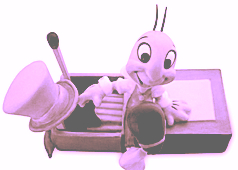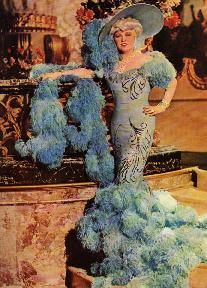I always like hearing my readers’ reactions to my posts, particularly on craft; those of us who have been in the game for a while tend to think so differently about what’s on the page than those brand-new to the craft that it’s sometimes hard for editors like me to see beyond what is to us old habit. For example, the last time I ran a series on protagonist passivity, reader Ashleigh wrote in to inquire:
You encouraged us to go through our manuscripts and mark places where the protagonist is not the primary actor and where she is merely observing. What about those instances when a character is reacting to an external stimulus? Does that make her the secondary actor rather than the primary actor? Can a protagonist be passive because they are too reactive and not proactive enough?
Doesn’t that get right to the core of the matter? Before I realized it, I had written four pages (standard format) in response. Then I thought: hey, shouldn’t I be sharing this with the rest of the class? Shouldn’t I, in fact, extend it into an entire post?
That’s often true of my responses to reader questions, I notice. In the interests of conserving time and energy expenditure, I really should answer more often with a post. But when I’m in a middle of a series…So until I mend my ways, it’s often worth going back and checking the comments on recent and archived posts; there’s quite a bit of useful material lurking there.
A first baby step toward responding less there and more here: the topic for today is how active is active enough, when the perspective is focused upon a particular character?
In any story that doesn’t involve the protagonist’s floating perpetually in an isolation chamber (a premise I wouldn’t recommend), she is going to be acted upon by external sources. That’s unavoidable — but there are active ways to react to ambient conditions and inactive ones, right?
Right?
Let’s get down to brass tacks: certain matters are beyond the control of even the most active protagonist. A tree falling upon her house, for instance, or a boss’ annoying whims. Her boyfriend’s suddenly announcing that he’s gay — or her girlfriend’s abruptly declaring that she isn’t. Civil rioting. Not winning the quilting prize at the county fair. Contracting the mumps. Death, either as a result of the mumps or otherwise.
That sort of thing.
In each of these cases, it would be unreasonable to expect the protagonist to be the generator (or generatrix, in this case) of the action of the scene. Gravity made that tree fall, after all, coupled perhaps with a little root rot.
Obviously, the protagonist is going to react to these external stimuli (unless, as I mentioned, she happens to be residing in an isolation tank).
A passive protagonist will respond primarily, from the reader’s point of view, with descriptive information about the effects of the catastrophe du jour. As in: “Why did that tree have to fall on Aunt Eugenia’s tea service! God obviously hates my entire family as far as it can be traced!”
Often, this takes the form of self-recrimination (“Why oh why did I not listen to that handsome arborist?”), resentment against the cause of the problem (“Daddy never got around to retrofitting the house. Mama always told him the roof would cave in someday!”), and/or analysis (“Why THAT tree, and why now? I’d best go to graduate school to learn something about Dutch elm disease, pronto.)
Quick: which of those responses is most likely to lead to protagonist activity? Got it in one: the thought that is forward-looking, rather than backward-looking.
How so, you ask? Well, as informative and entertaining as the first two responses might be on the page, they don’t actually change the situation at hand, do they?
I might even go so far as to posit that as a grand rule of thumb when deciding whether a protagonist’s response to external stimulus is too passive: is anything within the situation DIFFERENT as a result of the protagonist’s response to it?
If not immediately, how about five pages hence? Ten? Half the book later?
Let’s look at this in action, shall we? If protagonist Angela is living through an earthquake in a scene, she is obviously not what is making the ground shake: unless she possesses some godlike powers, she is being acted upon by the ground. So far, so good.
But the writer can choose to have her just crouch under a table, riding it out (a mighty fine plan in real life, should you ever find yourself in this situation, incidentally). Or the writer could choose to show her doing something active in response — saving a puppy from falling glass, perhaps.
In neither instance is Angela the cause of the primary event of the scene, but the first case, she is passive; in the second, she is not.
That was an easy instance; it becomes more complicated when other, more action-generating people are involved. This time, let’s have Angela be acted-upon by another human being: she’s waiting in line at the bank when a robber walks in and threatens everybody.
Again, in real life, Angela would probably be best served by being passive — sensible lady that she is, she might well choose to down on the floor as requested, waiting all a-tremble for the robber to get the money and go.
On the other hand, she would be most active if she jumped up, wrestled the gunman to the floor, and once again snatched a puppy from the jaws of imminent harm.
But realistically, Angela could still be active in her response, even without canine-related heroics. She could, for instance, surreptitiously work her coat over that puppy while she is lying on the floor, ostensibly following the robber’s directions, or whisper encouragement to the hysterical old man lying next to her who might be shot if he keeps whimpering.
In both these cases, although an outside observer might consider Angela passive, the reader knows better: she is struggling against an externally-imposed fate in small, believable ways. And that makes her the primary actor in the scene, if the narrative perspective remains focused upon her.
Starting to be clearer now? Let’s take another, less dramatic example — the one in which I happen to find myself at the moment, so I suppose that makes this memoir:
I am writing this on an airplane that is either experiencing epic turbulence or is rolling over Godzilla’s back. The dear lady sitting in front of me has just reclined her seat so far that my laptop, carefully balanced on the tray table before me, keeps snapping shut onto Our Heroine’s typing hands. The Recumbent One seems to be suffering from some sort of seizure, as she keeps bashing herself against the back of her bedlike seat, as though to encourage it to flatten onto my lap still farther. All the while, the gentleman behind me snores resonantly.
By no stretch of the imagination did I cause any this, other then getting on the plane in the first place and wanting to work on my blog, right?
I ask because I tend to feel responsible no matter what happens — I felt guilty when the Soviet Union fell, for instance, because I was worried about the locals getting heating fuel in the cold winter to come — but it’s apparent even to me that I am neither the demented deity shaking the plane like some demented child with a rattle, nor the ever-dissatisfied recliner, nor the producer of those rather ghastly noises best confined to one’s private bedchamber, rather than shared public space. I am, in fact, the victim here.
As much as we might not like or even notice it, our actions affect other people, and they us. Especially, as in this case, when some people I could name are so territorial that they obviously automatically recline their chairs as far as the darned things can go JUST BECAUSE THEY CAN.
But let me ask you something about what I’ve just written: am I an active protagonist in this account, or a passive one?
Actually, it depends a bit on the genre in which I was writing it: in a thriller, my quiet resentment would have come across as pretty passive. But in a memoir — hey, I called it — the reader would probably perceive my response as active, because I put so much vim into describing my resentment of it all.
But really, in real life, what made me an active responder was my muttering under my breath after the last jerk backwards, “Lady, it doesn’t recline anymore, obviously.”
And how do we know for sure that made me a more active protagonist in my own tale? Because I evidently said it loudly enough that the seizure-haver has calmed herself. Situation changed!
Now if I could only do something about all of that turbulence…and if only I hadn’t designed these seats so only a Munchkin could fit into them comfortably….
Which is, I suppose, a long-winded way of saying that Ashleigh’s last question went right to the heart of the matter. The protagonist does not need to cause the action in a given scene to be an actor in it, for our passivity-analysis purposes — she merely has to ACT.
Necessarily, she’s not always going to be the primary actor, but she can always do or say something, however tiny, in response to what is going on, to keep herself in the game.
I’m not saying it’s always going to be easy to discover how to demonstrate this on the page, particularly for shy characters. The greater the external stimulus, the more difficult it is to find that spark of autonomy: when people feel helpless, “How can I alter this situation in an indirect manner?” is not usually the first question that leaps to their minds.
But the attempt to change the situation — not necessarily the success of that attempt — honestly does make a great difference from the reader’s perspective. On the page, whether a murder victim scratches her attacker or freezes in fear — both completely understandable reactions, right? — can be the line between an active protagonist and a passive one.
Although I applaud any author brave enough to write from the perspective of someone on the bottom end of that extreme a power differential, victims in fiction are all too commonly, well, victims. Personally, I think it is far sadder when a vibrant, complex individual character’s life is destroyed than a passive one’s; to paraphrase EF Benson, I like to see characters who are terribly interested in life until the moment they go phut.
Even if this means going away somewhere else in thought, because there is no other course of action available. (As, for instance, Our Heroine might concentrate even more intensely upon her blog, now that the seizure-haver is readjusting herself to watch the in-flight movie.)
Let’s say that Angela is now tied up on a railroad track, poor girl, à la The Perils of Pauline. Clearly, there’s not a lot of physical action she can take in this instance, or even verbal action: trains make a lot of noise, after all.
So whatever can she do? She could just lie there and scream, waiting for someone to rescue her, of course, while the villain twirls his moustache in glee: passive.
Or she could, in the face of imminent death, project herself into a fantasy of ascending the peak of Mt. Everest, seeking cool mental breezes while the locomotive’s hot breath is bearing down upon her: active.
Tell me, which would you rather read?
When your protagonist is acted-upon, concentrate upon finding that instant of autonomy, rather than trying to force the protagonist to take control of a scene that would realistically be beyond her control. Figure out where a miniscule change is possible, or where an attempt to fight back would be plausible.
Do I hear some snickering out there? “Right,” I hear some of you gigglers say. “Tell me, Anne, how is that protagonist going to find autonomy against the reality of that falling tree?”
A whole bunch of ways, O snickerers. She could get out of its way, for instance (good choice), or snatch that ubiquitous puppy away from its far-reaching branches just in the nick of time. She could drag everyone within dragging distance into the wine cellar, anticipating the end of the world.
Or she could try to run into the house to save Aunt Eugenia’s tea service — even if she’s stopped by that handsome arborist or a concerned neighbor, her attempt to do SOMETHING to save the situation is going to give her power in the scene.
So there.
If you can find the time, a great exercise for developing a sense of active response is to write a scene where your protagonist is listening to a non-stop talker, a situation where it would require actual rudeness to get in a word edgewise. How can the protagonist control or alter the interaction, if only for a second at a time?
Okay, how can she do it without picturing herself on the peak of Mt. Everest?
There are no easy answers here, my friends, only meaty challenges to your creativity. I know you’re up to it. Keep up the good work!




















